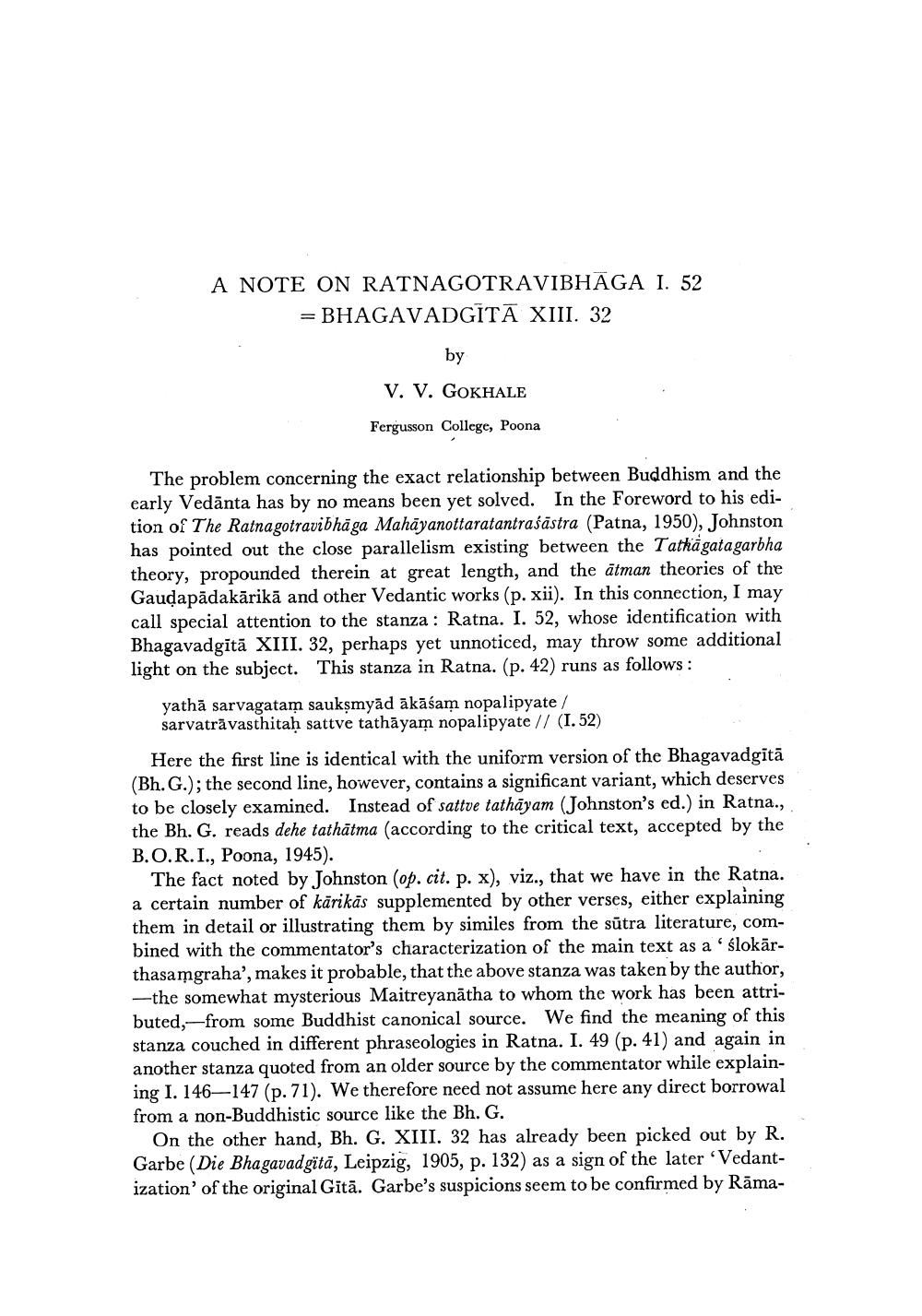________________
A NOTE ON RATNAGOTRAVIBHAGA I. 52 = BHAGAVADGĪTĀ XIII. 32
by V. V. GOKHALE Fergusson College, Poona
The problem concerning the exact relationship between Buddhism and the early Vedānta has by no means been yet solved. In the Foreword to his edition of The Ratnagotravibhāga Mahāyanottaratantraśāstra (Patna, 1950), Johnston has pointed out the close parallelism existing between the Tathāgatagarbha theory, propounded therein at great length, and the ātman theories of the Gaudapādakārikā and other Vedantic works (p. xii). In this connection, I may call special attention to the stanza: Ratna. I. 52, whose identification with Bhagavadgitā XIII. 32, perhaps yet unnoticed, may throw some additional light on the subject. This stanza in Ratna. (p. 42) runs as follows:
yathā sarvagatam sauksmyād ākāśam nopalipyate / sarvatrāvasthitah sattve tathāyam nopalipyate // (1.52) Here the first line is identical with the uniform version of the Bhagavadgitā (Bh. G.); the second line, however, contains a significant variant, which deserves to be closely examined. Instead of sattve tathāyam (Johnston's ed.) in Ratna., the Bh. G. reads dehe tathātma (according to the critical text, accepted by the B.O.R.I., Poona, 1945).
The fact noted by Johnston (op. cit. p. x), viz., that we have in the Ratna. a certain number of kārikās supplemented by other verses, either explaining them in detail or illustrating them by similes from the sūtra literature, combined with the commentator's characterization of the main text as a 'ślokārthasamgraha', makes it probable, that the above stanza was taken by the author,
-the somewhat mysterious Maitreyanātha to whom the work has been attributed, from some Buddhist canonical source. We find the meaning of this stanza couched in different phraseologies in Ratna. I. 49 (p. 41) and again in another stanza quoted from an older source by the commentator while explaining I. 146–147 (p. 71). We therefore need not assume here any direct borrowal from a non-Buddhistic source like the Bh. G.
On the other hand, Bh. G. XIII. 32 has already been picked out by R. Garbe (Die Bhagavad gütā, Leipzig, 1905, p. 132) as a sign of the later Vedantization of the original Gitā. Garbe's suspicions seem to be confirmed by Rāma




